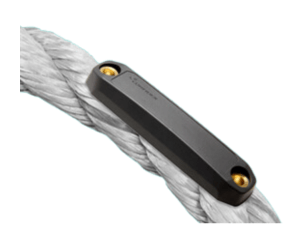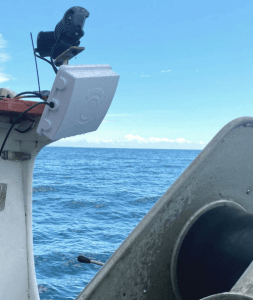Developing any kind of emerging technology involves learning and calibration along the way, especially when working with an environment as tough and changeable as the sea.
The process of creating the Insight360 system has been one of constant evolution. As well as data from tests, feedback and insights from our fishing partners has been vital to this – as is well illustrated by the recent case of the Radio Frequency Identification tags.
Making the Insight360 system smarter about fishing activities
The Insight360 system was initially designed to include a GPS-assisted feature for automatically detecting when a fisher is deploying or hauling a static net. However, one of the fishermen involved in the project raised the concern that GPS speed and location data can have a significant margin of error. This could have led to the system falsely identifying deployment or hauling of nets.
We decided to explore whether Radio Frequency Identification (RFID) tags fitted to the headline ropes of the nets could do a better job. These tags contain a microscopic chip bearing a unique digital code. An RFID “reader” can then identify and read a tag by picking up on its reflected Radio Frequency energy, within a set distance.
Testing the seaworthiness of the technology
Before trialling the technology, we needed to identify the RFID tag and reader most suitable for use within the marine environment. With many options available, we needed for a tag that was cost-effective, wouldn’t interfere with fishing activity, and would be resilient to conditions out at sea on fishing vessels. After careful consideration, we chose the Confidex Steelwave RFID tag, with the 1.5cm x 7cm eyelet variant being our preferred one. The size of this particular tag matches perfectly with the width of a typical headline rope, and the eyelets allow for secure attachment to the headline rope using zip ties or twine.

A mock-up of how the RFID tag sits on the headline rope
Next, we carried out two days of testing – one to see how well the tags could be attached to a set net, and the other to test various tag shapes and sizes at sea on both shooting and hauling nets. We also timed how quickly three different RFID tags could be detected on shooting nets – which turned out to be less than 224 milliseconds! Final follow-up tests using 10 different RFID tags yielded a 100% recognition success rate, capping a highly satisfactory set of results gathered at sea.
These tests go to show that low-cost and seaworthy RFID tags can be incorporated into the Insight360 system. While further research is needed to assess the potential impacts of biofouling – where microorganisms and other marine life such as barnacles accumulate on manmade materials which spend time in the sea – the inclusion of RFID technology represents an exciting development in the Insight360 journey.

An RFID antenna, positioned to face a hauler and detect RFID tags